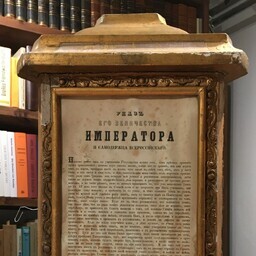Kirikukohtu ajaloost Eestis ja muutused läbi aegade.
Kirik oli Vene riigi all
.
Vaimulikud olid eraldi
.
Kirik oli Vene riigi all
Tõlge fraasile: Kirik oli Vene riigi all
EN
The church was under Russian rule
Vaimulikud olid eraldi
Tõlge fraasile: Vaimulikud olid eraldi
EN
The clergy were separate
1920ndatel elas Eestis palju kristlasi
.
Suur osa kuulus luteri kirikusse
. Kirik oli tähtis, kuid nüüd vähem.
1920ndatel elas Eestis palju kristlasi
Tõlge fraasile: 1920ndatel elas Eestis palju kristlasi
EN
In the 1920s, there were many Christians in Estonia
Suur osa kuulus luteri kirikusse
Tõlge fraasile: Suur osa kuulus luteri kirikusse
EN
A large part belonged to the Lutheran church
Kirikukohtu ajalugu algas 13. sajandil
.
Katoliku kirikul oli oma õigussüsteem
.
Piiskopikohtud tegelesid usuasjadega
.
Kirikukohtu ajalugu algas 13. sajandil
Tõlge fraasile: Kirikukohtu ajalugu algas 13. sajandil
EN
The history of the church court began in the 13th century
Katoliku kirikul oli oma õigussüsteem
Tõlge fraasile: Katoliku kirikul oli oma õigussüsteem
EN
The Catholic Church had its own legal system
Piiskopikohtud tegelesid usuasjadega
Tõlge fraasile: Piiskopikohtud tegelesid usuasjadega
EN
Bishop's courts dealt with religious matters
17. sajandist oli luteri kirikul konsistooriumid
. Need tegelesid kiriku küsimustega.
Konsistooriumi otsusi sai vaidlustada
.
17. sajandist oli luteri kirikul konsistooriumid
Tõlge fraasile: 17. sajandist oli luteri kirikul konsistooriumid
EN
From the 17th century, the Lutheran church had consistories
Konsistooriumi otsusi sai vaidlustada
Tõlge fraasile: Konsistooriumi otsusi sai vaidlustada
EN
Consistory decisions could be disputed
1832. aastal tuli Vene riigis luteri kiriku seadus
.
Konsistooriumid allutati Peterburile
.
Kiriku kohtusüsteem muutus kaheastmeliseks
.
1832. aastal tuli Vene riigis luteri kiriku seadus
Tõlge fraasile: 1832. aastal tuli Vene riigis luteri kiriku seadus
EN
In 1832, the Lutheran church law came into effect in the Russian Empire
Konsistooriumid allutati Peterburile
Tõlge fraasile: Konsistooriumid allutati Peterburile
EN
Consistories were subordinated to St. Petersburg
Kiriku kohtusüsteem muutus kaheastmeliseks
Tõlge fraasile: Kiriku kohtusüsteem muutus kaheastmeliseks
EN
The church court system became two-tiered
1925. aastal eraldati riik ja kirik
.
Kirikud said rohkem vabadust
. Konsistoorium kaotas mõned ülesanded.
1925. aastal eraldati riik ja kirik
Tõlge fraasile: 1925. aastal eraldati riik ja kirik
EN
In 1925, the state and the church were separated
Kirikud said rohkem vabadust
Tõlge fraasile: Kirikud said rohkem vabadust
EN
Churches gained more freedom
1926. aastal loodi Vaimulik Ülemkohus. See lahendas vaidlusi konsistooriumi otsuste üle. Ülemkohus lõpetas töö 1935. aastal.
Nõukogude ajal kirikukohtud suleti
. Saksa ajal nad taas töötasid. Eesti vabanes ja kirikukohtud taastati. 2021. aastal kirikukohtud lõpetati. Nüüd lahendatakse vaidlused Piiskoplikus nõukogus.
Nõukogude ajal kirikukohtud suleti
Tõlge fraasile: Nõukogude ajal kirikukohtud suleti
EN
During the Soviet era, church courts were closed
The history of church courts in Estonia and changes over time.
The church was under the Russian Empire. The clergy were separate.
In the 1920s, many Christians lived in Estonia. A large part belonged to the Lutheran Church. The church was important, but now less so.
The history of church courts began in the 13th century. The Catholic Church had its own legal system. Bishop courts dealt with religious matters.
From the 17th century, the Lutheran Church had consistories. They dealt with church matters. The decisions of the consistory could be contested.
In 1832, the Lutheran Church law came into effect in the Russian Empire. Consistories were subordinated to St. Petersburg. The church court system became two-tiered.
In 1925, the state and the church were separated. Churches gained more freedom. The consistory lost some of its tasks.
In 1926, the Ecclesiastical Supreme Court was established. It resolved disputes over consistory decisions. The Supreme Court ended its work in 1935.
During the Soviet era, church courts were closed. During the German era, they operated again. Estonia regained independence and church courts were restored. In 2021, church courts were terminated. Now disputes are resolved in the Episcopal Council.
